|
"Throw them a bone" - Keeping upper management occupied and off -your -back. Mikey loves to eat his bone. He takes it to his favourite place on the living room floor and begins to gnaw. A distraction that has him snarfling in happiness for hours.
When projects appear to be planned effectively or there have been few complaints, upper management gets scared. Option 1 - because there is something wrong with the project process and no one is talking or Option 2 - they are bored and want to make sure it appears they are still in control. With Option 1, you have bigger issues and should re-evaluate your position or ask for help. Option 2 - it is time to find a small element of the project you can toss to the boss to chew-on while you keep the project moving forward. The bone (element/item/issue) you throw should not have a major impact to your overall deliverable or have negative consequences if the chewing gets out of your control. The bone is not to be taken away until it is finished or devoured. If the bone is taken away too early, then said management is left dissatisfied and looking for more. Do not take toys away until everyone is finished playing. Distractions in the workplace are good when regulated. Visual distractions - there is nothing wrong with eye-candy in the office male, female, or gender neutral. Verbal distractions - chatting about the weekend with your pod-mates. Food distractions - getting up from your desk to have a treat. Project distractions - discussing other project success and failures with the office. The infamous multi-tasking theory is also known as multi-distractions. There are some individuals who can do one or more tasks simultaneously. They live in the ocean and have 8 tentacles. Attention to a specific task or element can ensure success as it has your concentrated efforts. Leaving issues that have not been carefully evaluated creates more work to fix after the team realizes there are errors in the decision making. Knowing when and where to give your full attention is a separate topic, but reviewing items with complete attention by yourself or the team can get good results. Mikey finishes his bone, licks his chops, and settles for a nap. He is content until he needs another bone. Meanwhile, the work keeps getting done. Mikey can be found at - www.britannicafitness.com
1 Comment
There are worse and better decisions - but one has to be made to keep a project going forward. Kevin sits at an open door and stares out at the backyard. The temperature has dropped to bloody cold and he is unsure if his paws deserve the uncomfortable chill in lieu of exploring inside the confines of his fence.
Finally, he turns around and walks back inside to his chair. He made his decision. His time on the fence will have to wait until a warmer day. Did he make the right decision? That depends on what his objective was. If his goal was to see if the Black Squirrel of Evil was unexpectedly flattened in the alley, then no, he did not succeed. If he wanted to take a temperature reading, then his efforts were successful. In either scenario, Kevin acted upon an action - a decision. A simple decision can move a project forward or multiple steps backwards. Many criteria, and factors influence the decision making process - thousands of books, blogs, and short films can be found on the subject. Decision by committee, decision by authority, decision by environmental elements, decision by dictatorship, and on and on. In life and with projects, decisions are powerful and need to have accountability. This is where the project decision making will make it's giant leaps - backwards or forwards. If decisions are being made by the team and backed by the team when things get tough, there can still be a positive outcome. If decisions are being made in isolation from the team, without input and not enforced, this creates imbalance and project disaster. Fear of making a decision, because it may not be a good one, immobilizes individuals from career satisfaction or advancement. On a project, no decision is worse than a bad one. Stagnating the deliverable process is not good for the team or the client. The wrong decision can lead to disagreements, but it will reveal what the better decision can be. Experiencing fear about making a decision indicates that you care about the outcome. This is good. You care about your work. Fear is accountability. You understand and take ownership of the decision and proudly take full responsibility good or bad like a real person. You don't cowardly blame others - you can insinuate that your decision making criteria may have been influenced by others comments, but the responsibility for the decision is yours. The more experience you have decision making, the less fear as you can anticipate the plausible outcomes. When you no longer have fear of your decisions, you have reached I.D.G.A.S. (I-don't-give-a...) level of enlightenment and should start looking for a holiday or new job. Unless it is only a discussion, each project meeting, big or small needs decisions to be made. This is how projects get completed. A project efficiency factor is how long it takes to make those decisions. Kevin in now sitting on his fence. He next decision will be to jump back into his own yard or explore that of the neighbours to observe the colour of their grass. That is a topic for another time - is the grass really greener? When individuals just need space... There are moments where Kevin disappears to have his "own time" or he conveniently turns his back to the world. Perhaps this is his time to reflect. I am not going to presume what he is pondering - his distaste for his new kitty food, or why his litterbox is getting too full, or fantasizing about his heroic efforts of fighting not just one but two antagonistic Magpies that bait him mercilessly from outside his glass prison. Maybe to cats, humans really are inferior and he is mocking our constant stupidity.
There are times in the office that we want to or need to, turn our own backs on the buzzing day-to-day. With the intensity of data entering our brains as we enter through the imaginary field of information that surrounds work environment, we have occasions where it can be quite enough. Or if we have a deadline, the undivided attention required to complete the task accurately and effectively is fierce. This focused introverted time can be mistaken for indifference, irritability, or anti-social behaviour when this solitude is a coping mechanism to get work done or to get organized. Respecting an individual's need to complete their work uninterrupted, or letting them have the time to be immersed in thinking, is a necessity in productive teams. In professional and specific non-professional work places, we are paid to think. In a society that requires tangible product to quantify if you have done any work or not, it is hard to see where "thinking" can be a billable rate on a client invoice. Several individuals thinking and working will produce a deliverable, but the time "thinking" isn't always factored into the workplan. Alone time can be contemplation time. Those with busy home lives or other responsibilities than what is in the office, use work to help keep the mind active and distracted. Mundane tasks can be done when the information overload has hit a maximum and there is a need to stop the insanity - recharge the brain cells. Too much alone time can have negative consequences. If the feeling of being alone leads to alienation at work or at home, and hopelessness sets in, then it is the time to seek help. A project leader or team members are responsible to watch for behaviour that seems uncharacteristic and discuss the issue with the office leaders. Even when we feel alone, there are millions of others feeling alone at the same time, so you are really not alone. If there wasn't such a fear of being alone, social media wouldn't be as big as it is. An hour passes and Kevin comes over to me where I am sitting and puts his paw on my leg. This is his sign that he has thought about what to write next and he is back to pushing our deadline. Trying to get out of bed and back to the office after a break. Kevin returns home from his holiday get-away, grateful that he is back in his house and back to his favourite chair.
Although vacation from work is extremely important for mental and physical health, it can be a real struggle to get back to the office. The night before the return to the office brings the "What do I need to do?" nightmares or the 3:00 am bolt-up in bed "Did I sleep in? Did I miss the alarm?". Knowing that there is a cold desk and bad coffee impatiently waiting for you in mere hours is not very enticing. It is like putting a cat in the bath water. The cat fights in the hopes that their paws never feel the unpleasant manky water. The 80% rule keeps us moving forward in day-to-day life. If you like your friends, family, spouse, hobbies, or work 80% of the time, you should be relatively content. Sorry, but there is no 100% liking everything at the same time. If you do like everything 100% of the time, then you are an exceptional person and lead an exceptional life or you are apt at convincing yourself the world isn't round. You can persuade yourself to believe anything. Not delusional, but incredibly optimistic and effectual. For the rest of us, the proverbial life cup hovers at half-full and 80% happiness is adequate. If work happiness is at 60%, then hopefully you have good hobbies. If work happiness is 100%, then you are a workaholic and sacrifice other elements of your life. If work happiness is 80-90%, then you have found your calling and are not going to create major imbalances in life. Pulling the key fob out of your pocket to get into the office after a break can feel like lifting an hundred-pound weight. Once the door releases, the transition between your personal life to your professional life has begun. For those who work from home, it could be the will to get your finger on the mouse to open your inbox. The good news, is everyone else in the office or at home is feeling the same way. Knowing that it isn't easy to get your rested butt back into your desk chair, it is important to give individuals time to adjust to their environment after their break before pouncing on them with tasks. It is also good to give them an update after their adjustment period of what has happened in their absence to give them inclusion back into the project. Then you can explain what is expected for deliverables in the upcoming days or weeks. After a few hours of returning to the office, the day-to-day rhythm begins and vacation seems like it happened months ago. Project deadlines still loom and the client still want your full attention. However, returning from a break can bring new zest and energy to your work. Thus the importance of taking the break in the first place. Kevin nudges my arm at 5am indicating it is time to get up and return to work. This is part of his routine. As I am ready to leave the house, Kevin goes to the window where he sits on the sill and begins his work day - sleep then eat or eat then sleep. There is an odd sense of calm as I get back to our everyday. Until next vacation, I think I can make it. Kevin and I work on a project with team members from other firms located in different countries. We know that dogs chase tails, cats don't listen to basic commands, and guppies do not speak English. Or any language that we are currently aware of. So how do you get all these animals to collaborate and work with a project plan to achieve a common deliverable? To identify a great advantage of technology, the connectivity of individuals and the global workforce allow us to access a variety of talent. The trick is trying to make sure everyone is available for a meeting when required in varying time zones. There is also understanding the social nuances of cultures. What we find as an amusing opening discussion statement in North America may not seem as amusing to others across the pond. Comments like "slipping one past the goalie" and "diddling it here and there" can be most inappropriate if the context is not wholly understood by all. Weather is a good, safe, universal topic along with quaint children, or pet stories. Politics are not always safe. However, in recent months, it was hard not to speak of Srexit or Frump. (Names of events or individuals have been changed to avoid controversy.) The neutralized issue or personality stance on a collaborative project is delicate. It is not entirely acceptable to single-out a specific wrong doing or doer during the project process. Name blaming doesn't make anyone seem sophisticated or higher than the average emotional intellect of the team. That is the most important item to remember - all are working as a team. Not to say that there isn't a time and place to vent frustrations. We are not above standing up for ourselves or making sure the right individuals know who is really doing what work, but the team needs to be operating effectively for project success. To work effectively, there should be minimal aggravations towards teammates or technical issues. All individuals may not be working in the same office building or for the same company, therefore, the project itself becomes the focused effort. Then there is the organizational chart. Who is to answer to whom and who is responsible for what role based-on fee splits. In a good collaboration, the upper management will have had a discussion regarding acceptable fees for the project elements and allow the game players to proceed without concern about who is paid to do what and work toward the greater good of the project. It only makes everyone look good when the project succeeds. Identifying problem persons which jeopardize the team can be dealt with tactfully without delivering a negative message to the whole project troupe. Negative thoughts perpetuate negative issues. Even beginning to refer to the project as following a successful track and minimizing overall issues will help guarantee the positive perception of the project to the team. Large project issues should not be trivialized, but they are not to be announced to the entire client group or project team. Dwelling on others misery must originate from the sandbox. The need to tell everyone Jimmy fell off the monkey bars, landed on his face, and wet his pants, was to make our own lousy attempts at the monkey bars seem less painful. Time to get over the it and keep what happened in the sandbox beneath the new dirt. Kevin is currently having a weekend getaway for a couple of days over the holiday. He is with new folks and new furry friends. It has been reported that he is not getting along with the other animals, but we aren't going to make a big deal of it. If he comes home fed and without scratches, we will say that his stay was as productive as it could have been considering the circumstances. Next time we will help him make it more successful - we will let him take his favorite chair. Making an overall project plan.  With the New Year approaching, we start to think about what we want the up-coming year to look like for us. If it has been a rough year with several bumps in the road with work and life, we look for new clean pavement ahead. If it has been a good year, we mourn the loss of past year and anxiously await what will happen over the next few months. New Year's disillusions - not resolutions. I have been prepping Kevin as this is the year of the New Dog. (Note: I am aware it is the year of the Red Chicken, however, City Bylaw does not allow chickens in our inner city dwelling.) Kevin and I need a plan of what having a new member of the household will be like. Sleeping arrangements, introductions, food dish locations, and saying goodbye to the annuals in the backyard. There are things we need to think about before our new arrival. When a project has been conceptualized, and now has the blessing of upper management to proceed, a team is required to produce, deliver, coordinate, and execute - turn the concept into being. There needs to be a master plan or overall project plan to get everyone to the final deliverable and preferably with limited staff and client casualties. In every office there are mad scientists who keeps the entire master plan snuggled in the Borca's area of the brain never to be placed on paper or whiteboard for all to see. It is equivalent to knowing that your team needs to get from where you are standing, through the park and to the store. Only, you don't know the park or on what street the store is located. With a mad scientist, they are the only ones who know where to go and if anyone gets separated from the team, everyone is lost. If you stop and take a bit of time to talk with your team and take a map to see what the most efficient and shortest way to the store is, BEFORE it closes, you will all be successful. An overall project plan contains key milestone dates, major roadblocks or constraints which can affect the outcome, resource ability, availability, interest, and what the deliverable actually is. The information from the overall project plan is to be shared with the team or they will have no idea what their limitations are. After the overall project plan is shared with the team, then the roles of each team member and their expectations can be reviewed. There is a factor of "oops" and "didn't expect that" incorporated into the overall project plan as well. Not exactly "plan B", but the awareness that not all will be precisely executed according to plan. The overall project plan has to be flexible as well - too many unknown factors can disrupt the initial plan, but you have to start somewhere. The popular vision of horizontal management where everyone is equal is a nice concept and can work under specific criteria, however, those perfect conditions are not consistent with every project and they are not the normal. In order for a project to be organized efficiently, someone has to be elected or chosen as the overseer. This person may not be the Project Manager. Team members with the ability to project plan and task manage can be the ones who help create and implement the overall project plan on a daily basis. A plan can be scribbled on a notebook or can be beautified by a graphic department, as long as it is enforced and accepted by upper management and the team it will be a key to project success and give the client confidence that you have their interests under control. The plan should be refered to during the project process to ensure continuity and revised where necessary. This is not a militant element, it is just basic organization. Perhaps when we discover the perfect algorithm for project planning with the human emotional factors included, we will not need the time required to create and implement the plan. In the meantime, Kevin and I will review our New Dog Plan to see that we haven't missed anything...and to plan if the dog sees Kevin as dinner... Candy or other treats in the office. According to science, food provides nutritional support to the body. A tasty sugary treat provides short term emotional support to the body - not nutritional. As Kevin's kitty treats provide him with morsels of happiness, our sweet or savory treats give us our dose of instant medicated pleasure. In trying to resist the colourful and flirtatious advances of the holiday candy at my desk, I think of every reason why their wrapper should not be torn open to reveal their inner treasure. However, at the slightest spike of adrenaline enduced by a one hour deadline, there is no time to think - only to react. My hand lunges for a candy and my fingers furiously paw the crinkly coating unveiling the chocolatey goodness beneath. The satisfaction of the candy is short-lived. My mouth feels soggy and defiled after the sugar infusion diffuses. Only water will dull the aftertaste. 20. min go by and I am cranky that I succumbed to such an impulsive need. 20 min. after that, the candy's twin stares at me with loneliness. "Leave no candy behind!", my tastebuds shout. A co-worker comes along and observes me and my lone tempter. I gleefully point to the candy dish in the center work pod. I am excited that I can bring someone else on my emotional journey to Candyland. The cycle continues throughout the rest of the day. The dish becomes empty with several different hands reaching for their fix.
Food is social. There must have been great rejoice and celebration when Og and Zog brought the Sabertooth home for dinner. There is comfort in the kitchen with the familiar smells of our favourite dishes. There is excitement of exotic meals that monentairly transport us to another place. We have lunch with co-workers to safely talk about uncomfortable issues, we make business deals over brunch, and network over h'dourves. Fruit still vanishes from the office lunch room on Fruit Day supporting the theory that it just isn't the candied treats motivating our emotional desires. I haven't seen a Christmas Veggie Cake, or Carrot Brittle, or Banaimo Bars in the staff kitchen yet, but there is evidence that these too would be eaten by some. The excuse to get out from behind our desk and take a tour about the office and go find a snack is great. Sugar or not, it is about food. Treats or a cup of coffee bought for someone on your team can mean a lot - it is a simple gesture of gratitude and appreciation. Food is a human essential and therefore it is a symbol of life and well being wanting to be shared. Kevin sits back on his hind quarters with his front paws reaching for me when I offer him a treat. I work efficiently to complete my task and walk to the candy jar for my reward. Is this bad reward behaviour? I don't think so. I will just need to practice not reaching for the second one....or third....or fourth.. Kevin and I drag ourselves to the office party.  Kevin looks for his coat and tails to wear for the office Christmas Party. He doesn't need to look far. His luxurious fluffy coat and bouffant tail makes him good arm candy at any event. With the holiday season upon us, stores begin to showcase evening wear for that once-a-year party where you can prove that you own clothes in other fabrics than denim or corduroy. It is also the party where you have the opportunity to glimpse into your co-workers personal lives - to see them with their significant other or observe them being unusually candid when speaking with you. At this iconic office affair, there is the anxiousness that for once your teammates can see the "real" you and they will parade about you with fresh eyes. The "real-ity" - most co-workers will sit at dinner tables with their work peeps - or with those they feel most comfortable talking to. Others will have to awkwardly engage in conversation with "that guy" who works on the other side of the office as they are late to the party and all the other tables have been filled. Like playing musical chairs - the last one standing gets booted from game.  After the second glass of free wine, as you drank the first one quickly to avoid looking bored, lips begin to loosen and the room gets louder. Proceeding the speeches and entertainment, the "Yawn, I am soo tired, I think it is time to go" vanish into the night not willing to take a part in the stories whispered in the staff kitchen on Monday morning. The third, fourth, and fifth glass of free wine are poured. The bar is now serving shots. The party can be heard on the street by passing pedestrians giggling at the knowledge of what kind of day tomorrow will bring for the merrymakers. Closet smokers open the doors of inhibition and light-up for all to see. Lines form at the washrooms and necklines plunge even further - both for the suit shirt and the strapless dress. Pictures from the wee hours of the office party resemble childhood photos where we appear kooky dressed-up in our parents fancy clothes. Our make-up smudged around our face as our small hands struggled with the lipstick tube. Several people are now half-in-the-bag. Men come alive with the sound of music. They no longer have two left feet, but the dance moves of Jagger. Their one dance move makes them the Prince of the Ball and women their Cinderella. As energy fades and the liquor runs dry, those left hail cabs or find hotel rooms for the night. Over 30 office Christmas Parties I have attended, I have been everything from the Yawner to the Cinderella. I don't believe in regrets - just misguided decisions, so I do not deny my actions. However, I have fond memories of meeting people with whom I worked and had never talked to. If I hadn't been seated across the dinner table from them at the Christmas Party I wouldn't have known they preferred Cyndi Lauper to Metallica. Or I wouldn't have met a co-worker's significant other in the washroom line-up. Or wouldn't have met the account manager if I had not dropped my bun on their foot in the buffet line. There should be more times that don't include copious amounts of alcohol or dress code where we are all free to be comfortable with our co-workers. We should have this relaxed environment in our everyday work and we should endeavour to make our teams want to share some morsel of their lives with us. It is how we learn who they are and how they can work better. Kevin looks handsome as usual. This year I go to the Christmas Party with no expectations and no curfew. We will see where the evening takes us and who we will meet. Hopefully, no one is allergic to cats. Exercise is good..keeps you from punching a team member.  Like many, I am not a born athlete blessed with naturally chiseled abs and a perky posterior. I have to drag my sorry sass once a week to the gym. There, I begrudgingly lay on a mat and try to make my elbows reach my knees, or try to lunge low enough to hear my ankles crack. Thankfully, I do have someone nagging me to work harder and his name is Mikey. For a dog, he can be a quite the drill sergeant when I am supposed to be getting results. Mikey often has to bark loudly as it is hard to hear anything over my complaining. Days can be long with multiple meetings, disapproving consultants, and balancing budgets which can make it difficult to do any physical activity other than lifting the latte to your lips. However, even a short walk can help with stress or fatigue. I know that going to the gym only once a week isn't quite enough to maintain good fitness or to see dramatic results, so when I can, I look to other activities to stay active. Cleaning the house may be included, but vacuuming sucks. :) After polling my co-workers and friends, all confirmed that they do feel better after engaging in physical activity. It is the initial motivation of going to the gym, changing, and starting an activity that creates the biggest barrier between people and their fitness. Picking-up the workout bag and arriving at the gym really is the hardest part of intense exercise. At home, walking down the stairs to the basement and jumping onto the treadmill can be the challenge. There isn't a good answer to overcome the motivational challenge of starting an activity as it is different for everyone. The knowledge that there will be more energy to help you through those meetings and increased patience to calm the consultants is a good motivator to get moving. Also motivating is the awareness that there are things to do outside of work that can help you have new experiences or meet other people who are also trying to stay active. Thirty minutes of walking on a treadmill while watching the glube-tube, or doing a few sit-ups and push-ups at the park with the kids, all count for some activity beyond sitting. Every time you do a small activity, make it harder and it will help. Mikey sees me complain during my sets, but he is unmoved. His goal is my goal - to complete the next 50 min. Each time I collapse on the mat and fain tears, I know that I am doing this for my own good, and the good of those around me whom I need to help guide and motivate. When the week has been extremely hard, and your patience pushed beyond the threshold of reasonable emotional tolerance, there really is nothing more satisfying than hitting a punching bag. The punching bag can't sue you. Mikey can be found at - www.britannicafitness.com The Seniors in the Office This is Alex and he is old.
Alex is in his 21st cat year which makes him about 100 in human years. He stopped grooming himself about a year ago, and takes pills everyday for his heart and high-blood pressure. He is able to jump-up on his favourite chair, climb stairs, and find the litterbox. The vet says that apart from his minor health issues, he can continue to trudge the corridors of his little life. He isn't going to let himself give up just yet. Alex is "that guy" (gal) in the office who keeps on working despite the hip replacement and seniors discounts. In the predominately younger offices, these individuals are truly relics. However, like old relics, they can be treasures. If you can be patient through the anecdotal evidence of how things were harder when they entered the corporate world, and the politically incorrect rants on humanity, you find nuggets of golden insight that they have cultivated over 40 years of experience. The senior, senior staff, contribute to the company in unique and often intangible ways. You need to respect the thousands of meetings they have attended, hundreds of invoices they have processed, numerous failures and accomplishments, and voluminous daily tasks. They appear not as fast or technologically savvy than their younger counterparts, but those years of experience mean that they do not have to think as hard or work long hours to solve a problem. Occasionally, golden individuals do need to be escorted to the exit door, but only if their distaste and resentment has reached the corporate tolerance saturation point. At this time they become disruptive and unruly - not caring how loud they are talking about the idiots they work with or eating any lunch they want out of the staff fridge. These individuals can also be the most relaxed and unwavering on a project team. I watch them navigate the intense and chaotic deadlines with calm and ease. On my first large project, a golden consultant told me to chill - the project would get done with or without me. It really is about the project process - the journey, not the destination. Although, if you aren't good at your job, you will not like the destination. Years later I am still trying to explore this word "chill", but looking to those golden individuals, I have hope that I will enjoy a better project temperature. When you are on a team with them or in the staff kitchen, remember that they are as scared of you as you are of them. Kevin walks over to Alex and gives him a bat on the ears indicating that he wants to play. Alex stares at Kevin in silence - Kevin disarms himself as Alex clearly isn't taking his bait. Then, with a steady paw, Alex thumps the unsuspecting Kevin to the ground. That is the elegance of age and experience. Even with technology on our side, we too shall get old. |
Author(s)Fiona Warren - 17 years experience with large high-profile projects and teams. Archives
April 2018
Categories |
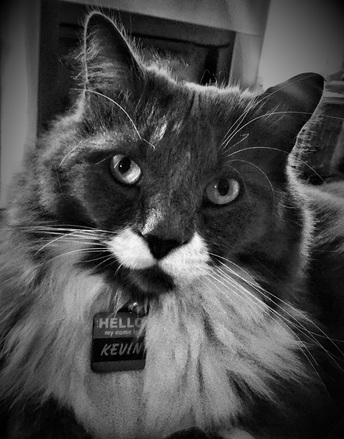














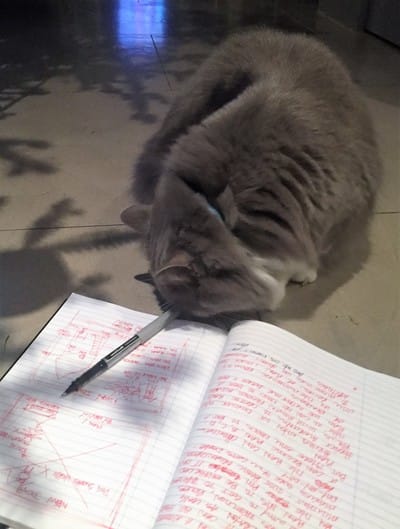




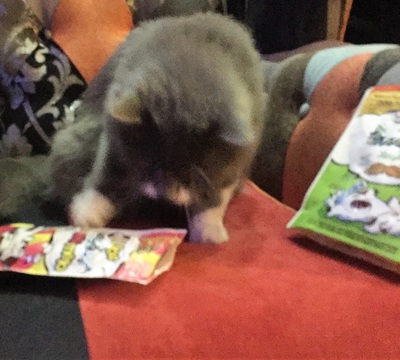





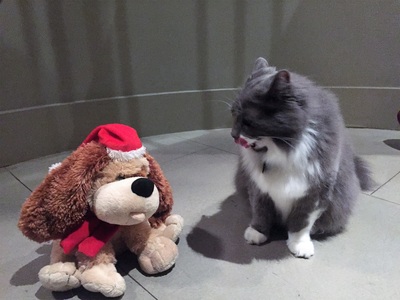


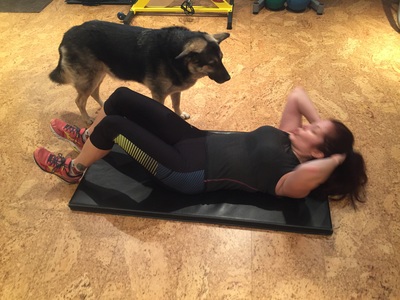




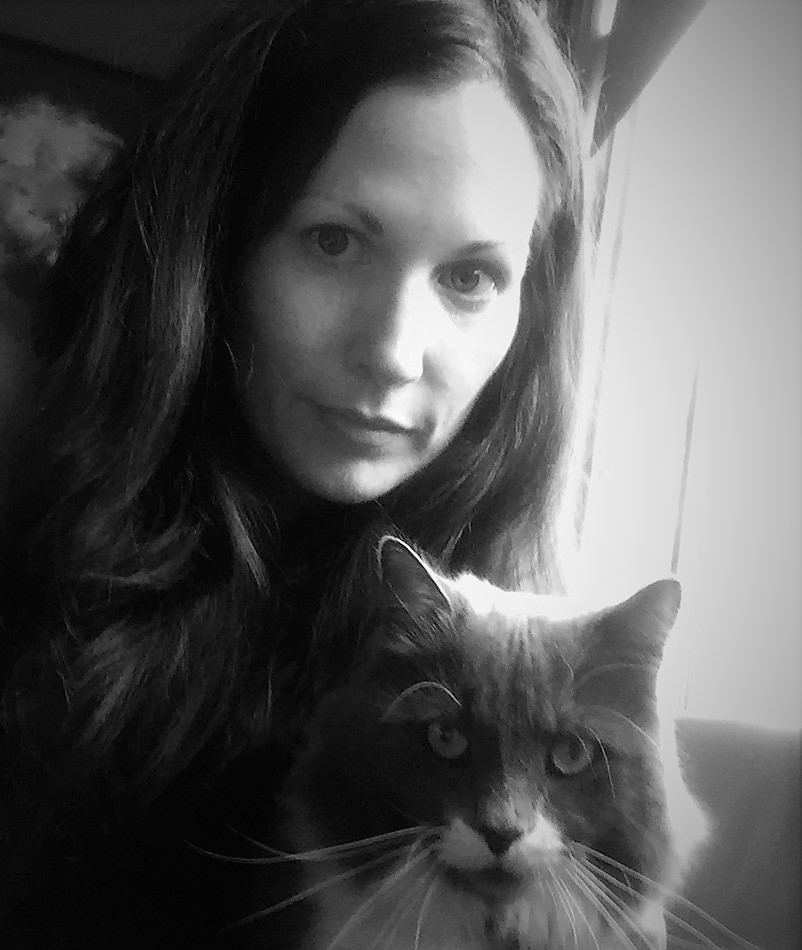
 RSS Feed
RSS Feed